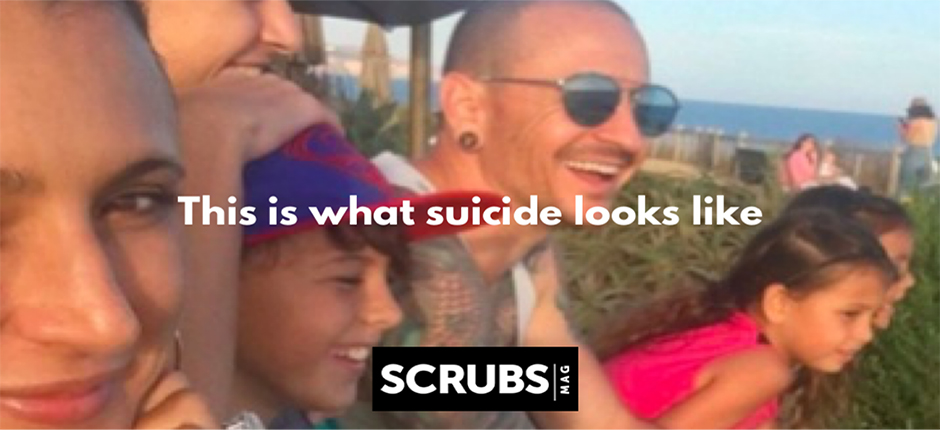Many mental professionals cheered when the new suicide prevention hotline went into effect in July. Individuals considering suicide can now call or text 9-8-8 to talk to a licensed professional over the phone. It is meant to work like a 9-1-1 emergency call system, and experts say the new number is much easier to remember than the 10-digit number it is meant to replace.
The change has led to a dramatic spike in call volumes. According to new data from the Department of Health and Human Services, there has been a 45% increase in overall volume compared to August of 2021 since the transition went into effect.
Several people have also taken to social media to express their concerns with the new hotline. They claim people looking for help may be forced into treatment or that the dispatcher will send the police to check up on them without their consent, but providers say that is always the case.
Changing the Face of Suicide Prevention
September is National Suicide Prevention Month, which comes as suicide rates are rising across the country. Suicide was the second leading cause of death for young people between the ages of 10-14 and 25-34 in 2020. And experts like Dr. Dan Reidenberg believe those numbers could increase by as much as 10% as new data comes in.
“The concern is great that our numbers of deaths are going up and that’s why 988 is so important,” said Reidenberg who runs S.A.V.E, a nationally recognized local nonprofit.
Crisis centers all over the country are struggling to respond to rising demand for mental health services. HHS reports that the number of calls went up by more than 50% compared to the year before, while text messages were up by 1,000%.
“As far as data points go, this is good news,” said psychologist Ben Miller, a mental health policy advocate. “People are using the line, which is what we want. It’s going to help save lives, which is what we want.”
Despite the added volume, the data shows wait times are decreasing. The average wait time for 9-8-8 callers was 2 minutes and 30 seconds in August 2021, which is a long time for someone dealing with a mental health problem.
But the average wait time is down to just 42 seconds.
“I don’t really know how this will play out over time, but to see such a huge increase, I have to attribute it to the fact that there’s more resources, meaning more call center staff, meaning more opportunities to develop the appropriate infrastructure to help get to people quicker,” Miller added.
However, the data doesn’t go into detail about how the program is faring in individual states.
“There’s going to be massive disparities across the states,” Miller predicted. “Workforce remains a major issue and will continue to be in the foreseeable future. Almost every state is looking to hire more professionals to staff the over 200 [call centers]” that make up the 9-8-8 service.
The pandemic has also made it difficult for these crisis centers to hire and retain enough staff to keep up with demand. Mental health experts note that the quality of care is likely to vary drastically from state to state.
“I think if we don’t aggressively pursue solutions in recruiting and retaining the workforce, we’re going to have a lot bigger problems down the road,” Miller explained.
Controversy on Social Media
Not everyone is excited about the new suicide prevention hotline. Some people who had negative experiences with suicide prevention programs are now discouraging others from calling 9-8-8.
“988 is not friendly. Don’t call it, don’t post it, don’t share it, without knowing the risks,” reads one Instagram post.
The user went on to list her chief concerns, including the risk of police involvement, involuntary treatment in an emergency room or psychiatric center, as well as the emotional and financial toll that comes with these experiences. Many of these voices are coming from the LGBTQ+ community and communities of color, but it’s not clear if callers are subject to involuntary treatment or interactions with law enforcement.
Emily Krebs, a suicide researcher and assistant professor joining Fordham University this fall, recently tweeted that 9-8-8 can and will “send police if they deem it necessary.”
But John Draper, executive director of the hotline and a vice president at Vibrant Emotional Health, the company administering the program, says dispatching the police is a last resort.
“We know the best way for a person to remain safe from harm is for them to be empowered and to choose to be safe from harm,” Draper said.
Crisis center counselors are trained to actively listen and discuss the caller’s concerns. They often talk about the person’s reasons for wanting to die. The counselor will also help them connect with family members, loved ones, and community leaders or refer them to a local care provider. Draper notes that most calls about suicide are de-escalated without law enforcement.
However, if the counselor feels that the caller is at risk of harming themselves imminently, emergency services should be called, according to the hotline’s policy.
Previous data shows emergency services were dispatched in 2% of all caller interactions.
Experts say if you are considering suicide but are not thinking about imminently harming yourself, it is highly unlikely that 9-8-8 will call the police without your consent.
Sonyia Richardson, a licensed clinical social worker who owns a counseling agency that serves mostly black and brown clients in Charlotte, NC, was initially skeptical of the service, but once she learned that fewer than 5% of 9-8-8 calls in North Carolina led to a law enforcement response, she felt reassured.
“There are going to be issues perhaps with 9-8-8, but it might be one of the safer options for us,” Richardson said.
















